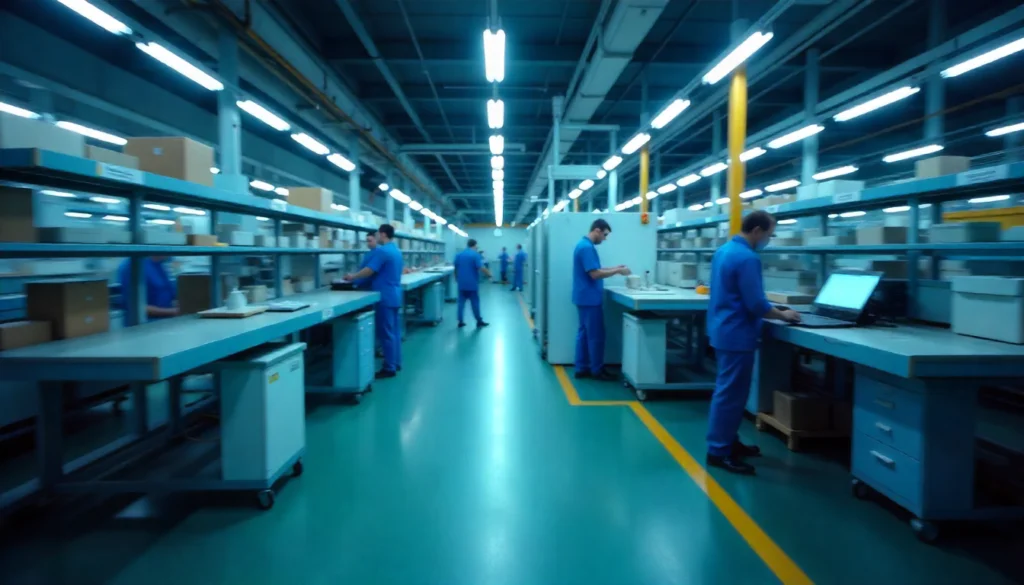How to reduce costs in a manufacturing company – this is a question that sooner or later every manufacturer has to face, regardless of size or industry. Decision-makers ask themselves: how can we cut costs without losing quality or continuity of processes? Rising energy prices, inflation, supply chain challenges, and increasing competition force company boards to look for solutions that help maintain margins and boost profitability.
The good news is that there are proven ways to achieve cost reduction in business operations. In this article, we’ll show you 6 practical ideas for savings in a company. Let yourself be inspired and start optimizing production processes in your plant. Many medium-sized enterprises, large companies, and international corporations are already using these methods. Join them today!
Cost analysis – where to start?
The first and most important step to minimizing costs in a company is a thorough diagnosis. Without it, cost-cutting measures resemble firefighting – they may bring temporary relief, but they don’t eliminate the source of losses.
So, where to start? The key lies in monitoring and analyzing production data. This way, you can identify bottlenecks and find the reasons behind budget leaks. Specific tools are particularly helpful here, including:
- MES system – enables real-time monitoring of machine performance, material usage, and downtime, making it easy to identify areas generating losses.
- Production report – compares planned vs. actual costs and allows quick reactions to deviations before they turn into serious financial problems.
- OEE (Overall Equipment Effectiveness) – provides a complete picture of equipment utilization and clearly shows whether production is profitable.
Why is this important?
Imagine a large chemical manufacturing company. If the company implements MES software, it may easily discover that a significant portion of losses comes from frequent changeovers. This insight can help streamline production planning. The effect? Shorter downtimes and real annual savings.

Optimization of technological processes
The next step to minimizing costs in business is analyzing technological processes and developing best practices – in short: process optimization. Why? Because very often, hidden costs are found in material flow, poorly organized procedures, or logistics.
How to reduce business operating costs through optimization? Three simple changes are enough:
- eliminating unnecessary steps in processes,
- shortening internal transport routes,
- using production planning systems that minimize overproduction and allow better resource balancing,
to feel the difference and even see it reflected in the company’s financial statements.
Even without expensive automation, process optimization alone can deliver quick and visible results. Examples? Here you go:
- Reduction of material waste – thanks to better planning and process monitoring, you can reduce raw material losses (e.g., fewer cutting scraps, more accurate dosing, fewer quality defects). Every kilo or liter saved translates directly into cost savings.
- Lower warehousing costs – with better planning, companies don’t produce just in case. Fewer finished products sit in storage, which means lower costs for space, internal transport, and logistics.
- Better use of operators’ time – optimized schedules and the elimination of unnecessary tasks (e.g., waiting for materials or documents) ensure that employees spend more time on actual production instead of auxiliary activities.
These are exactly the areas where quick results are born, often visible in just the first months after changes are introduced.

Take advantage of our experience!
Do you want to identify unnecessary costs in your company and turn them into profit?
Sign up for the Free 360 Workshop. It’s 6–8 hours of working with explitia experts, ending with a report and concrete recommendations – no sales pressure, with guaranteed real value.
Automation as a way to savings in a manufacturing company
Another method of reducing fixed costs is automation. Surprised? True, initial investments may be significant, but the return on investment usually comes faster than expected – thanks to higher efficiency and error elimination.
How can you automate processes in your plant? Here are three tips:
- an MES system integrated with ERP automates reporting and data flow,
- quality control automated with sensors eliminates losses from defective series,
- internal transport with AGVs shortens time and reduces logistics costs.
Yes, if your company implements MES, it can significantly reduce administrative costs in production – reports are generated automatically, and managers gain quick access to the data they need for decision-making.
Effective energy management and fixed cost reduction
Do high energy bills give you a headache? You’re not alone – this is a global problem. But is there no way to counter it? Not necessarily. The solution is an EMS (Energy Management System), which allows you to track and optimize media consumption in detail.
What does EMS provide?
- identification of the most energy-intensive machines,
- optimization of production schedules in line with cheaper tariffs,
- elimination of machines running idle.
From experience, we know that if a company implements EMS, it can easily lower energy costs – simply by changing machine schedules and consciously analyzing reports, savings can be noticed within just one year.

Negotiations with suppliers and purchase optimization
Sometimes, the biggest cost reserves are outside of production – in procurement. Cost reduction in business operations can be achieved through:
- purchase consolidation and better commercial terms,
- Total Cost of Ownership (TCO) analysis to avoid “seemingly cheaper” components that create higher service costs,
- automation of purchasing processes, which reduces errors and speeds up document flow.
How investments can also lower costs
Investments are often associated with expenses, but well-planned ones can lead to real savings. Modernizing machines, implementing new systems, or upgrading employees’ skills increase efficiency and minimize the risk of costly downtime.
Example: let’s say a food manufacturing company analyzes costs and develops a strategy to reduce operating expenses. It decides to implement MES integrated with production planning. The result? Shorter production cycles and savings that, within a year, outweigh the cost of the entire investment.
When looking for an answer to the question: how to reduce costs in a manufacturing company, remember that there is no universal solution – just as no two plants are the same. Real effectiveness comes from combining several actions: process optimization, automation, IT system implementation, better energy management, and smart supplier negotiations.
If your goal is minimizing costs in business, the first step is to use tools like MES, EMS, OEE, or production reports. With them, companies gain real insight into where losses arise – and that means you’re on the right track to turning them into a competitive advantage.








